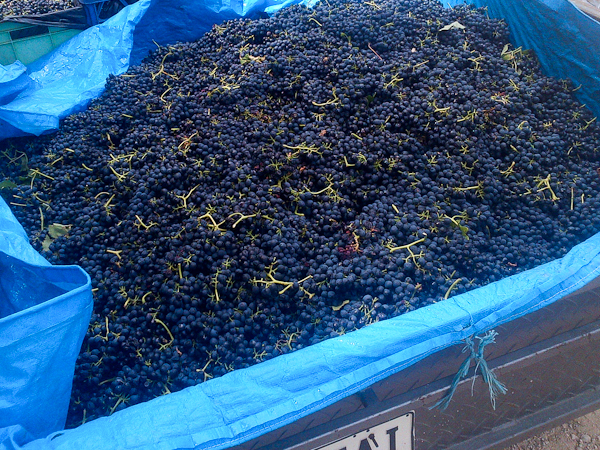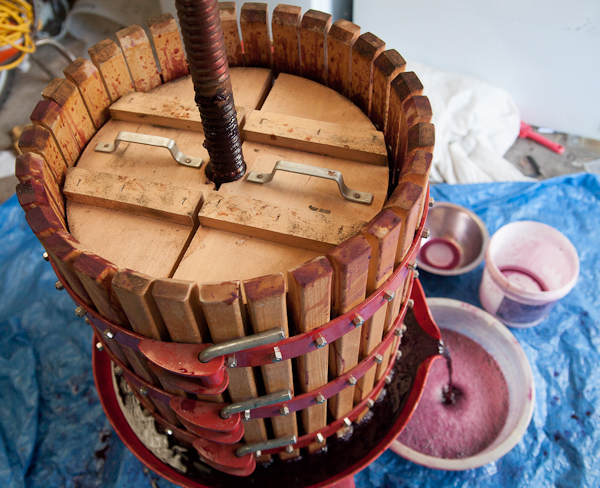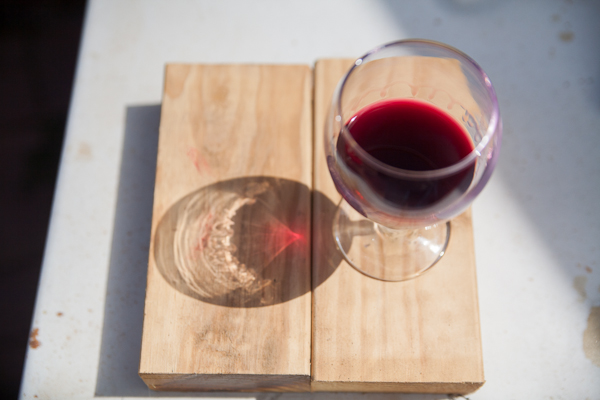
Leading up to this years wine season, I’ve been reading a lot about ‘natural wines’ – eg wines produced with as little intervention as possible. This usually means no yeast added, no acid added and no or minimal sulfur used. By extension techniques like micro-oxygenation, use of tannin extracts, reverse osmosis and many other things done in modern commercial winemaking would be ruled out. I think an advocate would say that taking this approach is the way to get the clearest expression of the character of the grape. This is a romantic idea, and one I agree with to some extent. It is nice to think that you could pick grapes, let them sit for a while, and end up with wine produced so naturally that it’s almost as if it just dropped from the vine into the bottle, with a character that expresses something about where and when and how it was grown.

On the other hand there are many good reasons that commercial wineries do the things they do. Adding a little acid to lower the wine pH stops bacteria from producing various foul tastes. Sulfur, in the form of metabisulphate, is used to stop the wine oxidising and also to reduce bacterial growth. Selected strains of wine yeast are added so that the fermentation completes and the wine doesn’t end up tasting too sweet. As much as it may be possible to create amazing wines with nothing more than grapes, I have tasted, made and heard of foul tasting bottles of syrupy vinegary horse blanket juice.

I picked up a Kindle copy of Naked Wine – Letting Grapes Do What Comes Naturally by Alice Feiring, which is a good read no matter which side of the fence you’re on regarding natural winemaking. Although she is very pro-nature, one message I took from that book was that anything you do should be justified, required vs done out of habit. Scientific methods shouldn’t be ruled out any more than natural methods – whatever will let you achieve your goal for your wine is what you should do.

This year I decided to take this approach, with intervention only where I really thought it was needed. For me this meant:
- No sulfur at crush – a nerve wracking change but one I hoped would yet wild yeasts add to the flavour profile of the wine.
- Only a tiny amount of commercial yeast – a pinch – was added to make sure there was some yeast capable of finishing the fermentation.
- A small amount of acid added to reduce the pH to a safe range without adding so much it was obvious in the flavour
- Minimal amount of sulfur added when the primary fermentation was added, to prevent bacteria turning the wine to vinegar as it ages.
- Minimal amount of sulfur will be added at bottling.
- No filtering or fining.
I should add that if you are taking this approach I think you should be tasting and smelling your wine at least once a day so you can spot any problems early on and do something about them. I’m happy to say my wine is going well so far – I just pressed it today after 2 weeks on the skins and it tastes, fruity, complex and delicious with a hint of butter in the mouth feel.

More
Naked Wine – Letting Grapes Do What Comes Naturally (book)